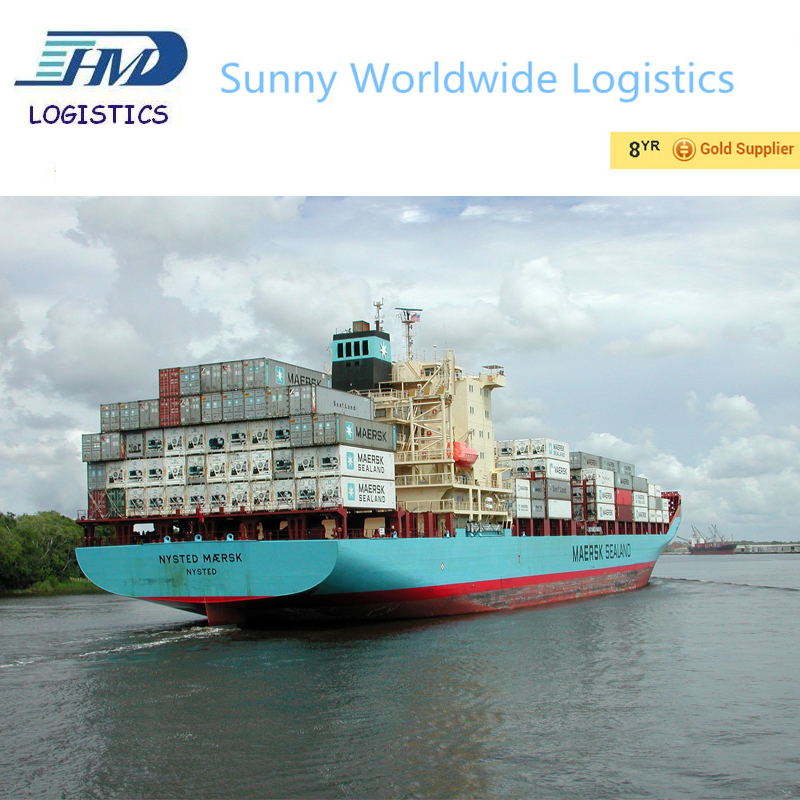Maersk hints at using LNG in post-2020 low-sulphur shipping
- Author:Alex
- Source:Sunny worldwide logistics
- Release Date:2018-02-28
Maersk hints at using LNG in post-2020 low-sulphur shipping

Company Profile:
Sunny Worldwide Logistics is a full-service domestic and international freight forwarder based in China.
Member of WCA ( World Cargo Alliance) , over the last 16 years, we focus on the reliable customer service and competitive transport

Sunny Worldwide Logistics is a full-service domestic and international freight forwarder based in China.
Member of WCA ( World Cargo Alliance) , over the last 16 years, we focus on the reliable customer service and competitive transport

DENMARK's Maersk Line, the world's biggest container shipping company, is considering converting ships to LNG fuel ahead of UN's 0.5 per cent sulphur cap rule that takes effect in 2020.
After appearing to favour scrubber technology, Maersk's chief operating officer Soren Toft appears to have had a change of heart.
LNG is CMA CGM's choice as its order of gas-fuelled 22,000-TEUers indicates. Apart from the many restrictions on LNG bunkering, ships powered by the gas must give up 500 TEU space to house the gas tanks.
Said Mr Toft: "This will add substantial cost, either in the form of fuel cost or in the form of investments needed to make the changes to vessels, be that investment in LNG or investing in scrubbers."
Like German shipping giant Hapag-Lloyd, Maersk has turned against exhaust gas cleaning scrubbers, which cost US$5 million to $10 million to install, reported London's Loadstar.
"If you think about scrubbers it is really mini refineries being installed on 60,000 ocean going ships," he said.
Currently the price of heavy fuel oil (HFO), burnt by ships outside of ECA (emission controlled area) regions, is around $350 per tonne, compared to low-sulphur fuel oil (LSFO) at $560 per tonne.
A 20,000-TEUer consuming 250 tonnes of bunker a day the potential extra cost for container lines will be massive from January 2020.
Vancouver's Ship & Bunker reported that Singapore oil analyst Viswa Lab said that assuming a $200 per tonne difference between heavy bunker and scrubbable low-sulphur fuel for a 20,000-TEUer would be $50,000, or $15 million a year based on 300 sailing days.
Thus, the investment in the installation of a scrubber system could be recovered in less than a year.
Maersk, along with other shipowners, all seem to be adopting a wait-and-see approach on scrubbers given that a recent report identified that globally only 240 ships have so far had a system installed.
Whatever solution they decide to go with, it is going to cost more to run ships from 2020 and ocean carriers will look to pass on the cost to shippers; although their track record on recovering fuel increase costs is not good.
On this point Maersk said success in obtaining an average $106 per FEU rate increase last year was almost wiped out by a 93 per FEU hike in fuel cost.
After appearing to favour scrubber technology, Maersk's chief operating officer Soren Toft appears to have had a change of heart.
LNG is CMA CGM's choice as its order of gas-fuelled 22,000-TEUers indicates. Apart from the many restrictions on LNG bunkering, ships powered by the gas must give up 500 TEU space to house the gas tanks.
Said Mr Toft: "This will add substantial cost, either in the form of fuel cost or in the form of investments needed to make the changes to vessels, be that investment in LNG or investing in scrubbers."
Like German shipping giant Hapag-Lloyd, Maersk has turned against exhaust gas cleaning scrubbers, which cost US$5 million to $10 million to install, reported London's Loadstar.
"If you think about scrubbers it is really mini refineries being installed on 60,000 ocean going ships," he said.
Currently the price of heavy fuel oil (HFO), burnt by ships outside of ECA (emission controlled area) regions, is around $350 per tonne, compared to low-sulphur fuel oil (LSFO) at $560 per tonne.
A 20,000-TEUer consuming 250 tonnes of bunker a day the potential extra cost for container lines will be massive from January 2020.
Vancouver's Ship & Bunker reported that Singapore oil analyst Viswa Lab said that assuming a $200 per tonne difference between heavy bunker and scrubbable low-sulphur fuel for a 20,000-TEUer would be $50,000, or $15 million a year based on 300 sailing days.
Thus, the investment in the installation of a scrubber system could be recovered in less than a year.
Maersk, along with other shipowners, all seem to be adopting a wait-and-see approach on scrubbers given that a recent report identified that globally only 240 ships have so far had a system installed.
Whatever solution they decide to go with, it is going to cost more to run ships from 2020 and ocean carriers will look to pass on the cost to shippers; although their track record on recovering fuel increase costs is not good.
On this point Maersk said success in obtaining an average $106 per FEU rate increase last year was almost wiped out by a 93 per FEU hike in fuel cost.

